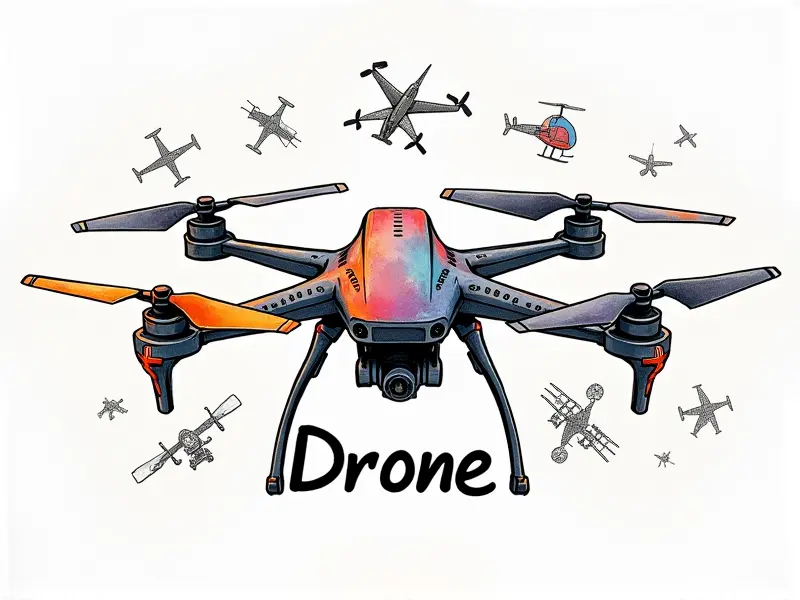Best uses for a repair drone

Best Uses for a Repair Drone
In recent years, repair drones have emerged as indispensable tools across numerous industries due to their ability to perform tasks that are often dangerous or impractical for humans. These unmanned aerial vehicles (UAVs) offer unparalleled precision and efficiency in maintenance operations, making them invaluable assets for businesses looking to enhance safety and productivity.
Precision Agriculture with Repair Drones
The agricultural sector has seen significant advancements through the integration of repair drones. These devices are equipped with high-resolution cameras and thermal imaging technology that enable farmers to monitor crop health, detect pest infestations, and assess soil conditions from above. By providing real-time data, repair drones help optimize irrigation systems, reduce pesticide usage, and increase overall yield.
Using Drones for Quick Roof Repairs
Roof inspections are often challenging due to the height and access limitations involved. Repair drones equipped with specialized cameras can easily navigate these obstacles, providing detailed images of roof damage without the need for scaffolding or ladders. This not only enhances safety but also accelerates the repair process by enabling contractors to quickly identify problem areas.
Key Benefits
- Safety: Minimizes risks associated with manual inspections.
- Efficiency: Reduces time spent on site visits and assessments.
- Precision: Accurate identification of damage points for targeted repairs.
Drones Revolutionizing Wind Turbine Maintenance
The wind energy industry has embraced repair drones to streamline maintenance operations at wind farms. These UAVs are capable of inspecting turbine blades, nacelles, and other critical components from a safe distance. Equipped with advanced sensors, they can detect wear and tear, corrosion, or structural issues that might otherwise go unnoticed until failure occurs.
Advantages
- Cost-Effective: Reduces downtime and maintenance costs.
- Reliability: Provides consistent data for predictive maintenance.
- Safety: Eliminates the need for workers to climb turbines.
Best Practices for Drone Bridge Inspections
Bridges require regular inspections to ensure structural integrity and safety. Repair drones play a crucial role in these assessments by capturing high-definition images of bridge surfaces, joints, and supports. By leveraging thermal imaging technology, they can also detect hidden defects such as water intrusion or metal fatigue.
Important Considerations
- Data Analysis: Utilize AI for comprehensive analysis of inspection data.
- Regulatory Compliance: Adhere to local regulations and guidelines.
- Training: Ensure operators are well-trained in drone operation and safety protocols.
Emergency Repairs with Autonomous Drones
In emergency situations, repair drones can be deployed rapidly to assess damage and facilitate repairs. For instance, after a natural disaster like an earthquake or flood, these UAVs can quickly survey affected areas, identify critical infrastructure needs, and guide rescue teams to the most urgent locations.
Applications
- Natural Disasters: Rapid damage assessment for immediate response.
- Traffic Incidents: Quick inspection of accident sites for road safety.
- Utility Outages: Identifying and repairing downed power lines swiftly.
Leveraging Repair Drones for Post-Disaster Assessments
Post-disaster scenarios often present complex challenges in terms of accessibility and safety. Repair drones equipped with LiDAR (Light Detection and Ranging) technology can create detailed 3D maps of affected areas, helping emergency management teams to plan recovery efforts more effectively.
Key Features
- Data Collection: Gathering comprehensive data on structural damage.
- Risk Assessment: Identifying potential hazards for rescue operations.
- Resource Allocation: Optimizing the distribution of emergency supplies.
Transforming Infrastructure Checks with Drones
The inspection and maintenance of infrastructure such as pipelines, power lines, and communication towers are made easier by repair drones. These devices can fly along these structures, capturing detailed images that allow for early detection of issues before they become critical.
Benefits
- Accessibility: Reaching remote or hard-to-reach locations easily.
- Cost Efficiency: Reducing labor costs and minimizing equipment needs.
- Reliability: Providing consistent data for long-term monitoring.
Repair Drones: The Future of Facility Management
The integration of repair drones into facility management is poised to revolutionize the way buildings are maintained. These UAVs can perform routine inspections, detect leaks, and monitor HVAC systems, among other tasks. By automating these processes, they free up human resources for more complex problem-solving activities.
Emerging Trends
- Automation: Increasingly autonomous operations with minimal human intervention.
- Integration: Seamless integration with existing building management systems (BMS).
- Innovation: Development of specialized tools and sensors for enhanced functionality.
Innovative Ways to Use Repair Drones Now
The potential applications of repair drones extend beyond traditional uses. For example, they can be employed in construction sites for site surveys, ensuring compliance with safety regulations and tracking progress efficiently. Additionally, they are being used in environmental conservation efforts by monitoring wildlife habitats and assessing the impact of human activities.
Current Innovations
- Construction Management: Site surveys and compliance checks.
- Environmental Monitoring: Tracking wildlife populations and habitat health.
- Civil Engineering: Assessing road conditions and planning infrastructure improvements.
Enhancing Safety with Repair Drone Technology
The primary advantage of repair drones lies in their ability to perform dangerous tasks safely. By eliminating the need for human workers to access hazardous areas, these devices significantly reduce the risk of accidents and injuries. This not only protects employees but also enhances overall workplace safety.
Key Safety Features
- Risk Mitigation: Reducing exposure to high-risk environments.
- Real-Time Monitoring: Continuous surveillance for immediate response.
- Data Security: Ensuring confidentiality and integrity of collected data.
Conclusion
The use of repair drones is expanding rapidly across various industries, offering unparalleled benefits in terms of efficiency, safety, and cost-effectiveness. As technology continues to advance, the potential applications of these devices will only grow, making them an indispensable tool for modern operations.
By embracing this innovative technology, businesses can stay ahead of the curve, ensuring they are well-prepared to meet future challenges while maximizing their operational capabilities.

